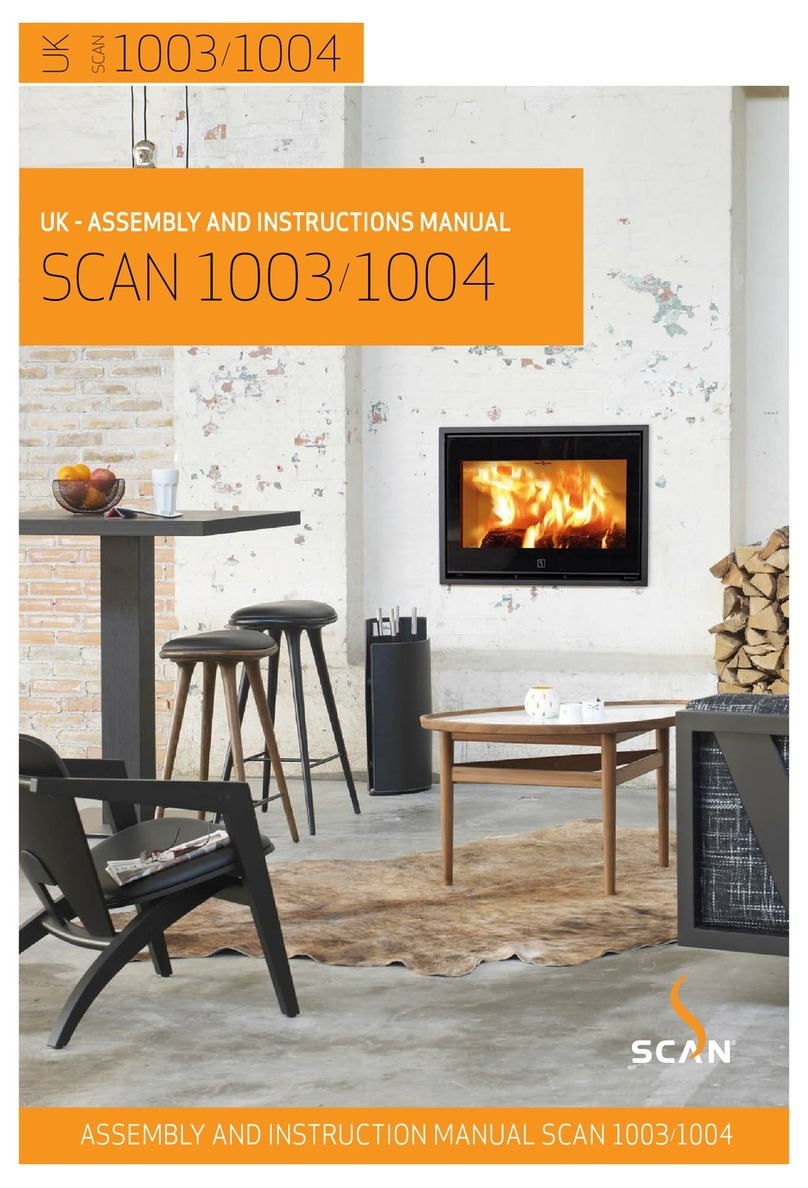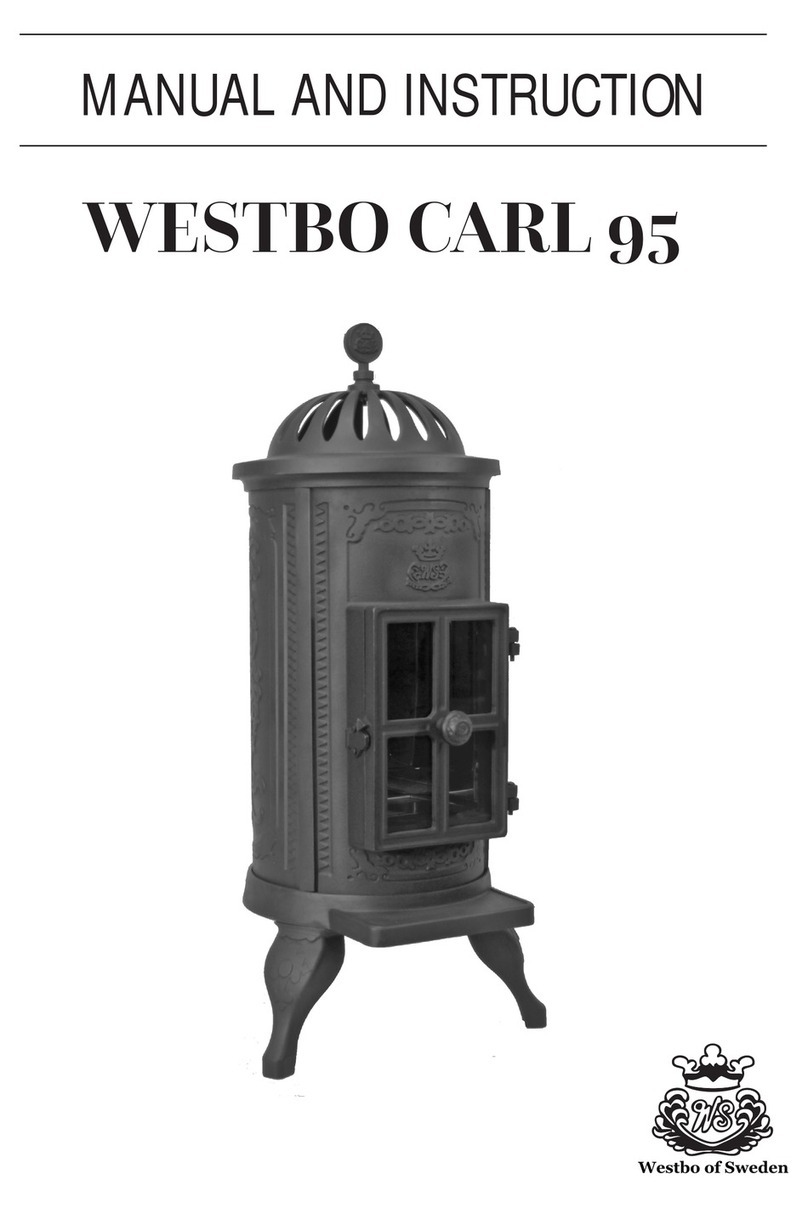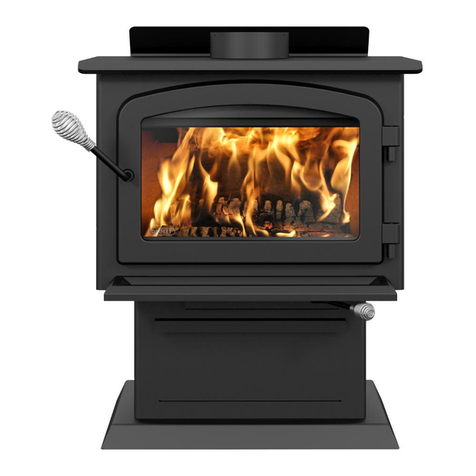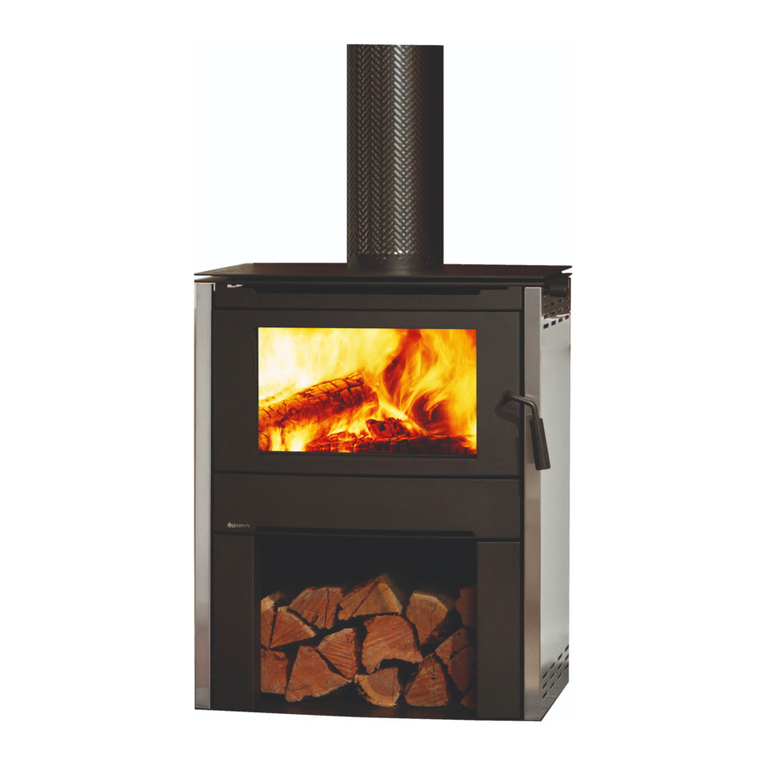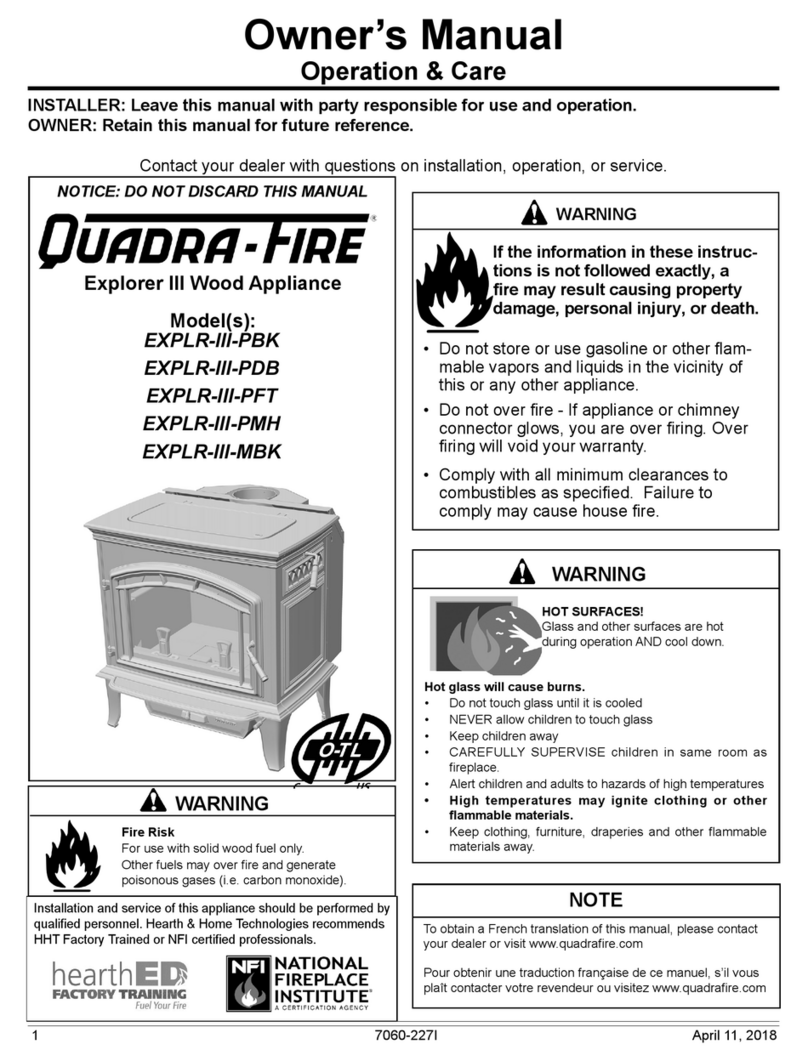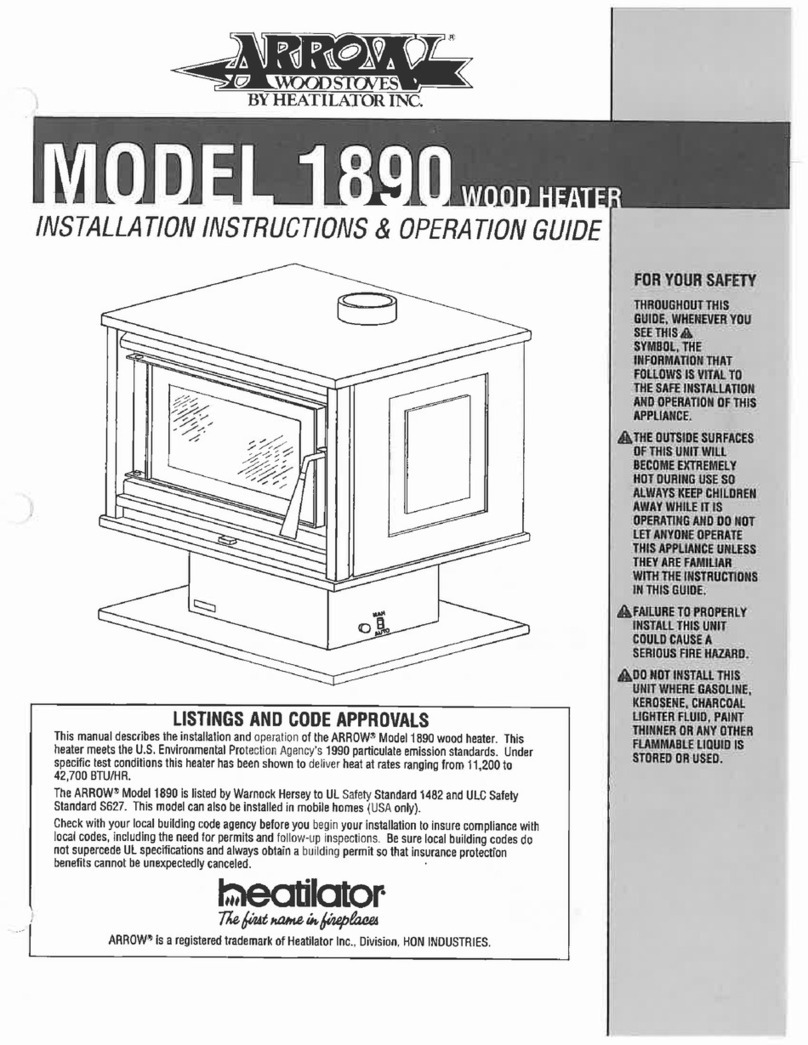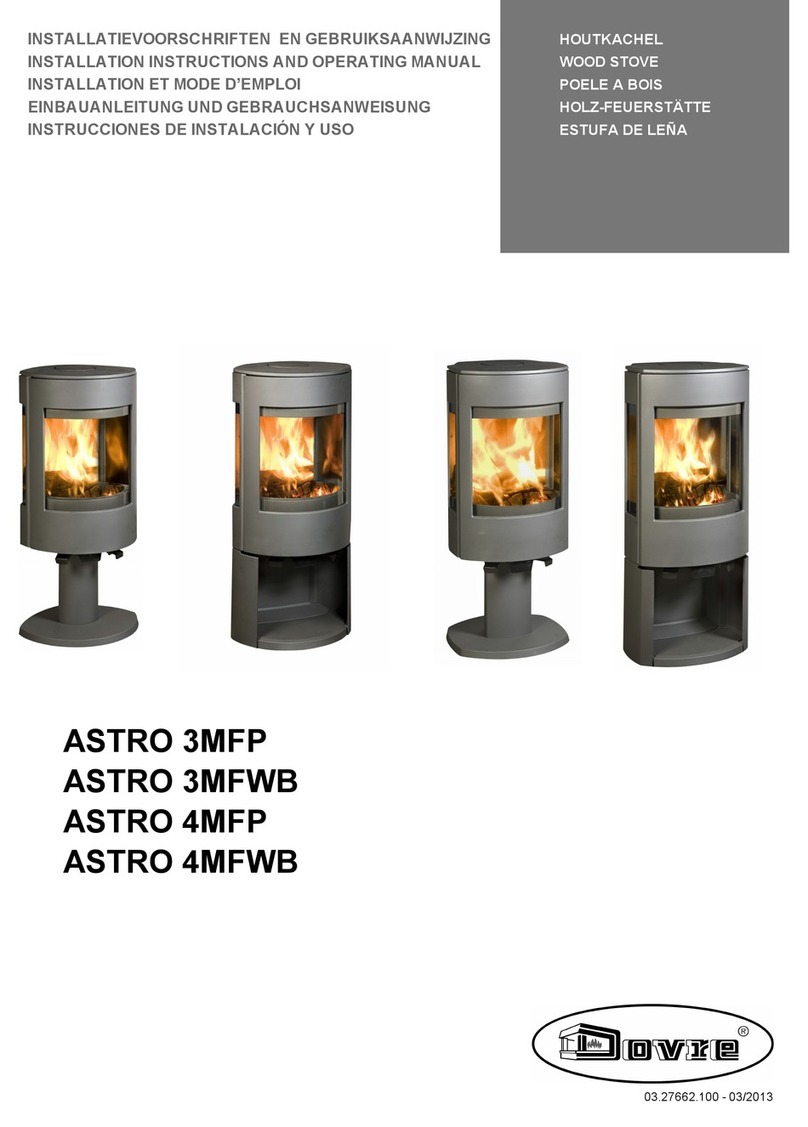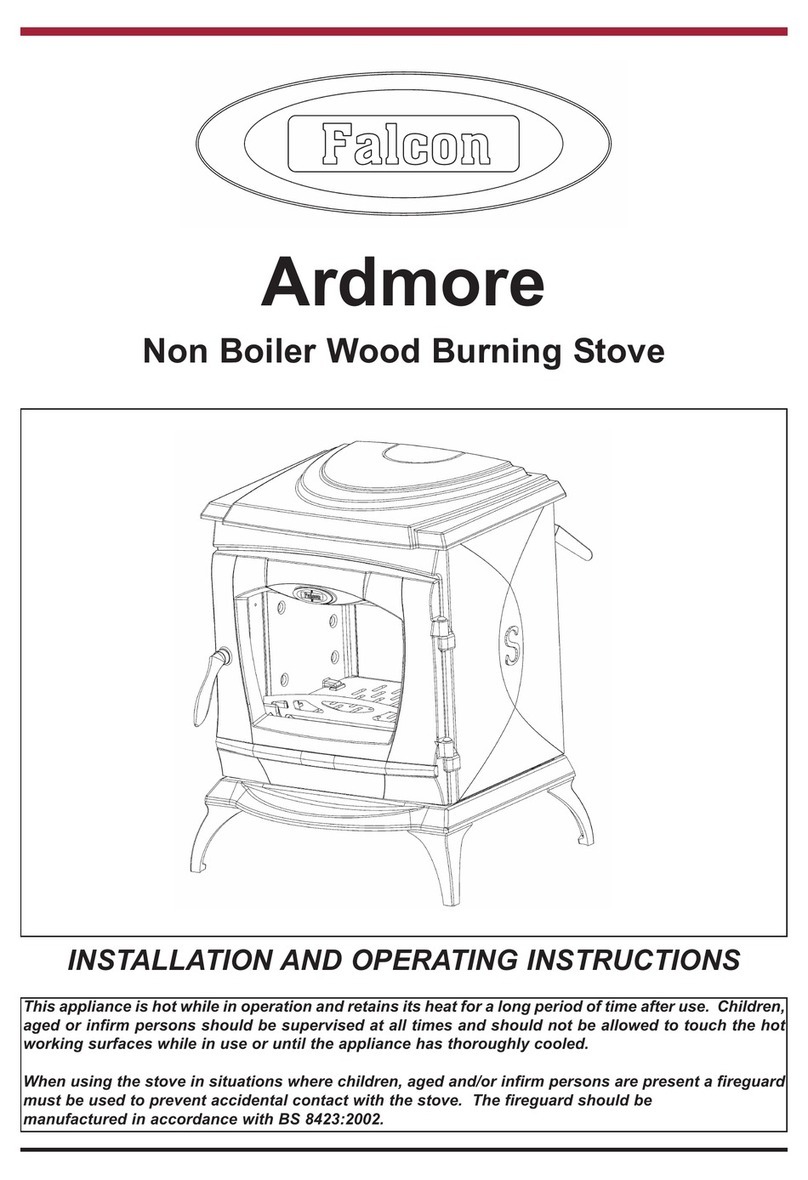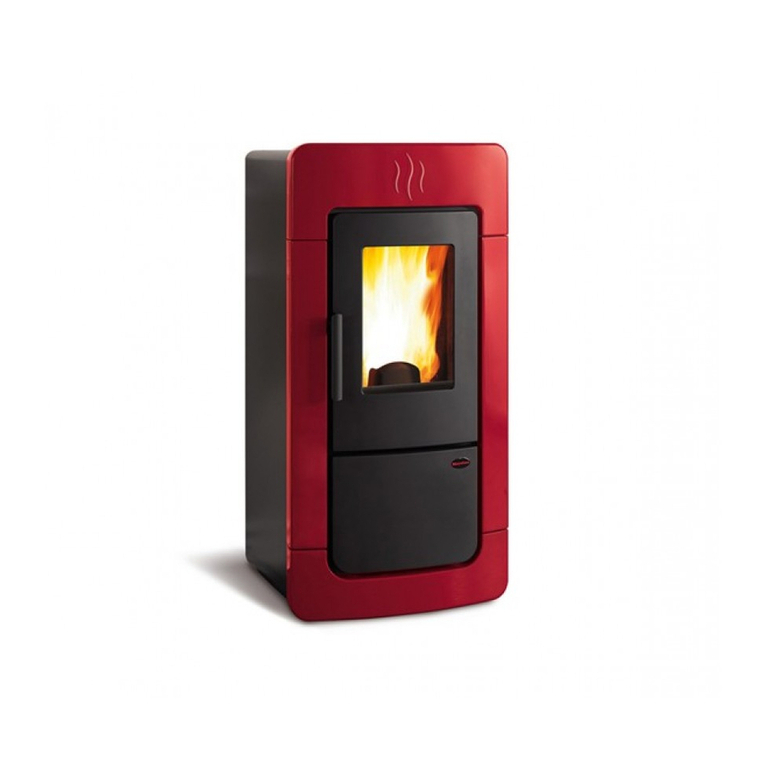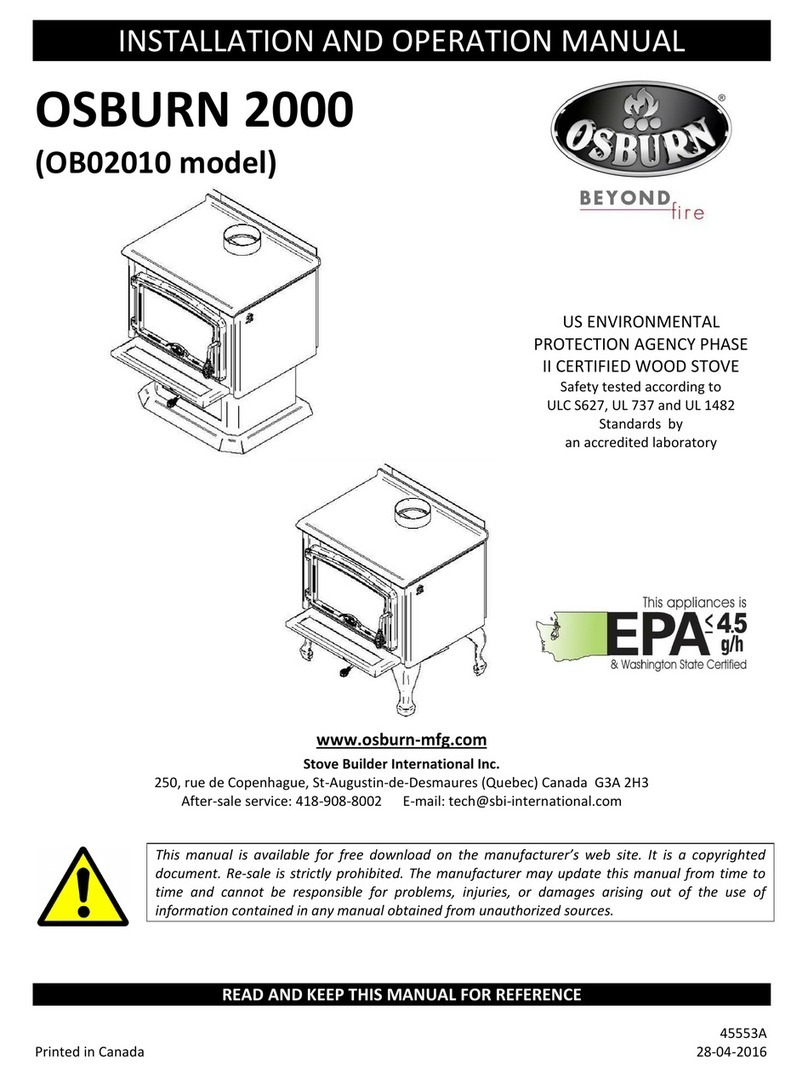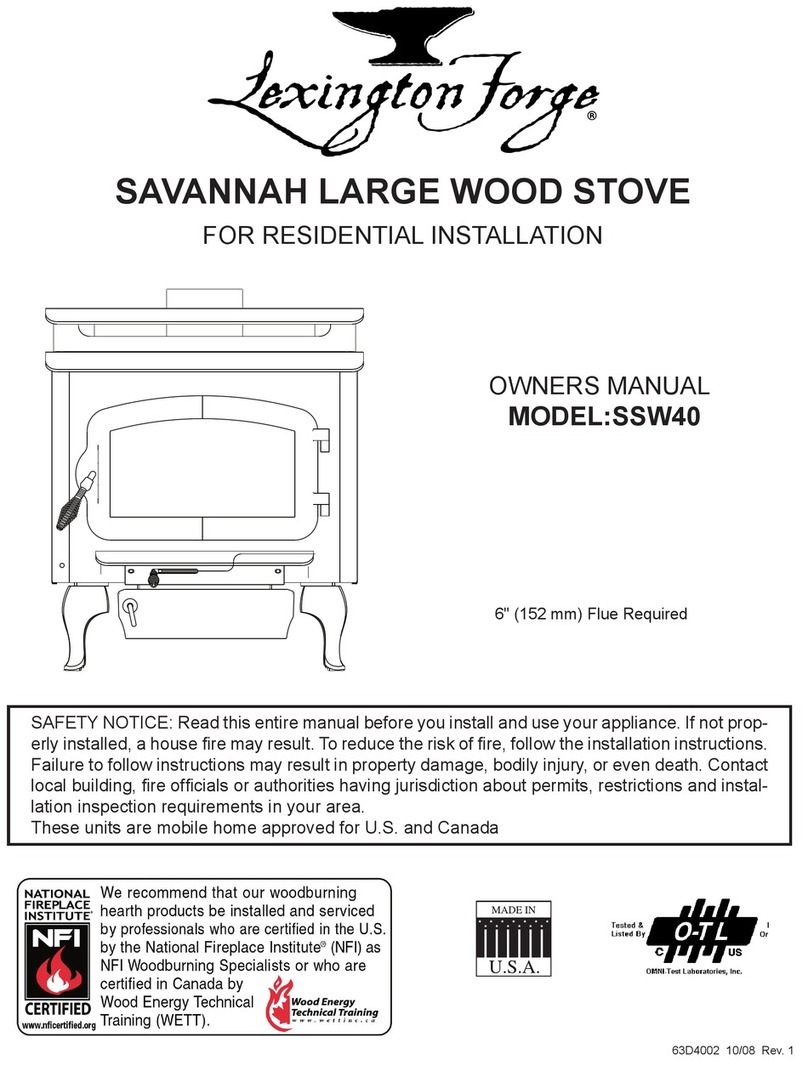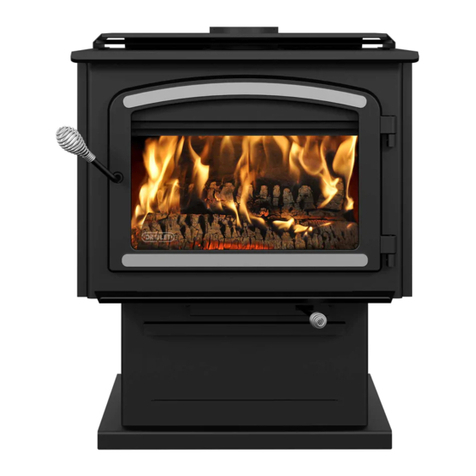
2Heatilator • ECO-ADV-WS22 • 7057-128D • September 15, 2011
SAMPLE OF SERIAL NUMBER / SAFETY LABEL
LOCATION: Back of Appliance
Read this manual before installing or operating this fireplace.
Please retain this owner’s manual for future reference.
Congratulations!
Congratulations on selecting a Heatilator wood burning
appliance. The wood burning appliance you have selected
is designed to provide the utmost in safety, reliability and
efficiency.
As the owner of a new wood burning appliance, you’ll want
to read and carefully follow all of the instructions contained
in this owner’s manual. Pay special attention to all cautions
and warnings.
This owner’s manual should be retained for future refer-
ence. We suggest you keep it with your other important
documents and product manuals.
Your new wood burning appliance will give you years of
durable use and trouble-free enjoyment. Welcome to the
Heatilator family of wood burning products!
NOTE: Clearances may only be reduced by means
approved by the regulatory authority having jurisdiction
SPÉCIFICATIONS DE LA VENTILATION:
MUR SIMPLE: De six (6 inches) (152mm) de diamètre le connecteur de
minimum d'acier noir ou bleu de minimum de 24MSG, avec une chemin
usine UL103HT* de Classe "A", adéquate pour usage avec les combustio
ou une cheminée de briques, avec espaces libres référés.
MUR DOUBLE: De six (6 inches) (152mm) de diamètre, le connecteur
d'air isolé pour mur double avec une cheminée bâtit en usine UL103HT*
"A, ou une cheminée de briques, avec espaces libres alloués.
MAISON MOBILE: Utiliser un conduit de mur double par Dura-Vent D
Metalbestos DS ou Security DL. Doit être équipé d'un arrêt d'étincelle.
espaces libres pour mur double comme mentionné ci-bas.
MINIMUM CLEARANCES TO COMBUSTIBLES In Inches & (Millimeters)
NOTE: All "A" , "C" and "F" Dimensions are to inside diameter of the flue collar.
LISTED ROOM HEATER, SOLID FUEL TYPE.
ALSO FOR USE IN MOBILE HOMES. (UM) 84 HUD .
"For Use with Solid Wood Fuel Only"
1445 N. Highway, Colville, WA 99114
www.heatilator.com
Install and use only in accordance with
manufacturer's installation and operating
instructions. Contact local building or fire officials
about restrictions and installation inspections in
your area. Do not obstruct the space beneath
heater.
WARNING - For Mobile Homes: Do not install in
a sleeping room. An outside combustion air inlet
must be provided and unrestricted while unit is in
use. The structural integrity of the mobile home
floor, ceiling and walls must be maintained. The
stove needs to be properly grounded to the frame
of the mobile home. Components required for
mobile home installation: Outside Air Kit, Part
Number OAK-ACC.
Refer to manufacturer's instructions and local
codes for precautions required for passing
chimney through a combustible wall or ceiling and
maximum offsets.
Inspect and clean chimney frequently - Under
Certain Conditions of Use, Creosote Buildup May
Occur Rapidly.
Do not connect this unit to a chimney serving
another appliance.
Optional Components: Optional Blower, Part
BK-ACC.
Electrical Rating: 115 VAC, 1.2 Amps, 60 Hz.
Route power cord away from unit. Do not route
cord under or in front of appliance.
DANGER: Risk of electrical shock. Disconnect
power supply before servicing.
Replace glass only with 5mm ceramic available
from your dealer.
Do not use grate or elevate fire. Build wood fire
directly on hearth.
Do not overfire - if heater or chimney connector
glows, you are overfiring.
CAUTION
:
U.S. ENVIRONMENTAL PROTECTION AGENCY - Certified to
comply with July 1990 particulate emission standards.
2010 2011 2012 Jan. Feb. Mar. Apr. May June July Aug. Sept. Oct. Nov. Dec.
PREVENT HOUSE FIRES
Report / Rapport: 3198460
Manufactured by:
HOT WHILE IN OPERATION DO NOT TOUCH, KEEP CHILDREN AND CLOTHING AWAY. CONTACT MAY CAUSE SKIN BURNS.
KEEP FURNISHINGS AND OTHER COMBUSTIBLE MATERIAL FAR AWAY FROM THE APPLIANCE. SEE NAMEPLATE AND INSTRUCTIO
A B C D E F G H
SINGLE WALL PIPE 10 (254) 8.25 (210) 21 (533) 11 (279) 3.5 (89) 12.5 (318) 49 (1245) *
DOUBLE WALL PIPE 9 (229) 7 (178) 19.5 (495) 9 (229) 3 (76) 12 (305) 49 (1245) 10 (254)
SINGLE WALL PIPE 9.25 (235) 7.5 (191) 18 (457) 8 (203) 3.5 (89) 12.5 (318) 49 (1245) *
DOUBLE WALL PIPE 9.25 (235) 7.5 (191) 18 (457) 8 (203) 3 (76) 12 (305) 49 (1245) 10 (254)
VENT SPECIFICATIONS:
SINGLE WALL: Six inch (6 inches) (152mm) diameter, minimum 24 MSG black or
blued steel connector pipe, with a listed factory-built UL103HT* Class "A" chimney,
suitable for use with solid fuels, or a masonry chimney, and the referenced clearances.
DOUBLE WALL: Six inch (6 inches) (152mm) diameter, listed double wall air
insulated connector pipe with listed factory-built UL103HT* Class "A" chimney, or a
masonry chimney and the referenced clearances
*In Canada must comply with Standard CAN/ULC-S629-M87 for the 650 degree
Factory-built chimneys.
MOBILE HOME: Use double wall pipe by Dura-Vent DVL, Selkirk Metalbestos DS or
Security DL double wall connector pipe. Must be equipped with a spark arrestor.
Apply double wall clearances below when installing unit.
SERIAL NO.
/ NUMÉRO DE S
WS22 WOOD STOVE
7057-
CHAUD LORS DE L'OPÉRATION. NE PAS TOUCHER. GARDEZ LES ENFANTS ET LES VÊTEMENTS LOIN DE L'ESPACE DÉSIGNÉ DE L'INSTALLATION. LE CONTACT PEUT
DES BRÛLURES À LA PEAU. GARDEZ LES MEUBLES ET LES MATÉRIAUX COMBUSTIBLES LOIN DE L'ESPACE DÉSIGNÉ DE L'APPAREIL. VOIR L'ÉTIQUETTE ET LES INSTR
ATTENTION:
APPAREIL DE CHAUFFAGE DE PIÈCE, DE TYPE DE
COMBUSTIBLE SOLIDE, POUR USAGE DANS LES
MAISONS MOBILES. (UM) 84-64 HUD. "Pour Usage
Avec Bois Solide Seulement"
Installez et utilisez en accord avec les instructions
d'installation et d'opération du fabricant. Contactez le bureau
de la construction ou le bureau des incendies au sujet des
restrictions et des inspections d'installation dans votre
voisinage. Ne pas obstruez l'espace en dessous de l'appareil.
AVIS - Pour Les Maisons Mobiles: Ne pas installer dans une
chambre à coucher. Un tuyau extérieur de combustion d'air
doit être installé et ne doit pas être obstrué lorsque l'appareil
est en usage. La structure intégrale du plancher, du plafond et
des murs de la maison mobile doit être maintenue intacte.
L'appareil de chauffage doit être fixé à la charpente de la
maison mobile. Les composants requis pour l'installation des
maisons mobiles: Assemblage d'air extérieur, Numéro de
Pièce OAK-ACC.
Référez vous aux instructions du fabricant et des codes
locaux pour les précautions requises pour passer une
cheminée à travers un mur ou un plafond combustibles, et les
compensations maximums.
Inspectez et nettoyez la cheminée fréquemment. Sous
certaines conditions, il se peut que la créosote s'accumule
rapidement.
Ne pas connecter cet appareil à une cheminée servant un
autre appareil.
Composants Optionnels: Ventilateur Optionnel, Pièce
BK-ACC.
Puissance Électrique: 115 VAC, 1.2 Amps, 60 Hz.
Éloignez le fil électrique de l'appareil. Ne pas faire passer le fil
électrique au dessus ou en dessous de l'appareil.
DANGER: Il y a risque de décharge électrique. Déconnectez
le fil électrique de la prise de contact avant le service.
Remplacez la vitre seulement avec une vitre céramique de 5
mm disponible chez votre fournisseur.
N'élevez pas le feu. Bâtissez le feu de bois directement sur
l'âtre.
Ne pas surchauffer. Si l'appareil de chauffage ou le tuyau de
PRÉVENTION DES FEUX DE MAISON
ESPACES LIBRES MINIMUM DES MATÉRIAUX COMBUSTIBLES En P
(millimètres)
NOTE: Toutes les dimensions "A", "C", et "F" sont à partir du diamètre i
l'entrée du conduit.
BACKWALL/SIDEW
MUR ARRIÈRE/MUR D
CORNER INSTALLATI
INSTALLATION DU CO
CONDUIT DU MUR SIMPLE
CONDUIT DU MUR SIMPLE
CONDUIT DU MUR DOUBLE
CONDUIT DU MUR DOUBLE
INSTALLATION: FULL VERTICAL / ENTIÈREMENT VERTICALE
INSTALLATION:
HORIZONTAL WITH MINIMUM 2 FT VERTICAL OFF STOVE TOP
INSTALLATION:
HORIZONTALE AVEC 609mm VERTICAL MINIMUM DU HAUT DU POÊLE
DO NOT REMOVE THIS LABEL / NE PAS ENLEVER L'ÉTIQUETTE
Made in U.S.A./Fait Aux États-Unis
*Au Canada doit conformer a CAN/ULC-S629-M87 la norme pour 650 degré C
bâtit en usine.
Fabriqué par:
007017
TESTED TO:/ TESTÉ À:
UL 1482, ULC S627-00.
AB
C
D
INSTALLATION: 90
o
ELBOW OFF TOP OF STOVE THROUGH BACKWALL
INSTALLATION: 90
o
DU COURBURE AU DESSUS DE HAUT DU PO
Ê
LE A TRAVERS LE MUR ARRIERE
Test Lab and
Report Number Model Name Serial Number
Manufacturer Date
SAMPLE





















